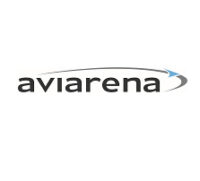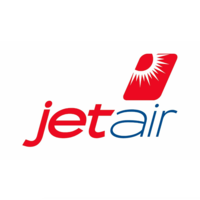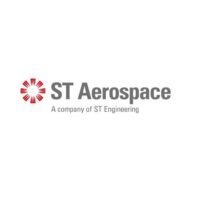EWIS Target Group 1&2
The course is intended for Qualified staff, performing EWIS maintenance and/or inspections Target group 1 and 2). Besides the theoretical training, the students will actually work on EWIS related components during our EWIS workshop. For that we use training panels and/or an actual B737-500 aircraft.
Course information
Course Description:
This refresher/continuation course is designed to refresh and reinforce the previously acquired knowledge and skills as concerns all Electrical Wiring Interconnection Systems.
This training is aimed to every qualified person who are:
- Target group 1 – Performing electrical wiring maintenance EWIS procedures,
- Target group 2- qualified staff performing maintenance inspections on wiring systems
in accordance with AMC 20-22, AMC 145.A.30(e) and Part-145.A.35(d), requirements.
Course Objectives:
The course is intended for Qualified staff, performing EWIS maintenance and/or inspections (Target group 1 and 2). The objective of this course is to provide students with all the information required to satisfy the requirements of Annex III to ED Decision 2008/007/R of 29/08/2008 AMC20-22 and help improve wiring and maintenance practices throughout the industry. This course aims to provide acceptable means of compliance to comply with training obligations as required in paragraphs 21.A.145 and 21.A.245 of Part-21, 145.A.30 and 145.A.35 of Part-145 and M.A.706 of Part-M with respect to EWIS.
Learning objectives:
This course provides the students with all the key information required to satisfy the regulation specific to their target group.
At the end of this course, you:
- know or are able to demonstrate safe handling of aeroplane electrical systems, line replaceable units (LRU), tooling, troubleshooting procedures, and electrical measurement.
- know or demonstrate the construction and navigation of the applicable aeroplane wiring system overhaul or practices manual.
- know the different types of inspections, human factors in inspections, zonal areas and
typical damages. - know the contamination sources, materials, cleaning and protection procedures.
- know or are able to demonstrate the correct identification of different wire types, their inspection criteria and damage tolerance, repair and preventative maintenance procedures.
- know or are able to demonstrate the procedures to identify, inspect, and find the correct repair for typical types of connective devices found on the applicable aeroplane.
- are able to demonstrate the procedures for replacement of all parts of typical types of connectors found on the applicable aeroplane.
Regulatory requirement compliance:
This course complies with the training requirements detailed in EASA AMC 20-22 Aeroplane Electrical Wiring Interconnection System Training Programme (ED Decision 2008/007/R) and is developed i.a.w. in accordance with AMC 145.A.30(e) and Part-145.A.35(d), requirements.
Prerequisites:
Basic knowledge of related Maintenance (Part 145) and/or Maintenance Management (Part M) regulations.
Course Topics
This course has been divided in 6 major parts, all covering different content
Part 1: General EWIS Practices
- Available safety procedures of normal and non-normal maintenance practices intended for self protection
- ESDS equipment anti-static procedures, ensuring no damage occurring to other equipment
- Correct use of tools (including specialized and automated tools and equipment)
- Verification of calibration or certification of instruments, tools and equipment
- Processes and procedures enabling successful usage of troubleshooting procedures and charts
- Correct use of electrical meters for measuring voltage, current, resistance, continuity, insulation and short to ground
- Removal and replacement techniques, ensuring no damage will occur to LRU or airplane connector
Part 2: Wiring Practices Documentation
- Applicable sub-chapters and sections to follow during normal and non-normal electrical maintenance procedures
- Usage of the Cross-Reference Index, Chapter Table of Contents and Subject Tables of Contents in order to find specific material within each Sub-Chapter and Section
- Usage of associated tables for replacement of wire, connective devices and contacts and associated components
- Usage of Wiring Diagram Manual and other documentation
Part 3: Inspection
- Why EWIS inspection?
- Four different types of special inspections
- Criteria and standards for these types of special inspections
- Effects of fatigue and complacency during inspection and how to combat these effects
- Different type of zonal inspection requirements related to system affiliation and environmental conditions
- Typical wiring system damages that can be found during EWIS inspection
Part 4: Housekeeping
- External contaminations and other damages due to external environmental conditions
- Aeroplane internal contamination sources
- Other possible contamination sources
- Contamination protection planning procedures to be followed on EWIS areas in different parts of the aeroplane
- Protection procedures and processes to protect the EWIS during maintenance and repair
- Processes of cleaning wiring systems during maintenance and repair
Part 5: Wire
- Procedures used to identify specific wire types using airplane manuals
- Wire and wire bundle inspection criteria and installation practices
- Typical wire damages
- Fitting of different types of sleeving
- Procedures for termination and storage of unused wires
- Installation practices for electrical bonds and grounds
Part 6: Connective Devices
- Types of connective devices and the identification of these
- Connective devices safety procedures, cautions and warnings prior to inspections
- Relevant visual inspection procedures so that internal and external damages can be found
- Typical internal and external damages to connecting devices
Part 7: Workshop – Connective Device repair
- Rectangular connectors
- Terminal blocks -modular
- Terminal blocks – non-modular
- Grounding modules
- Pressure seals
Course Duration:
1 day (starting at 09:00 both days and ending at approximately 16:00).
Materials used
Required Materials:
Easy Access Rules for Acceptable Means of Compliance for Airworthiness of Products, Parts and Appliances (AMC-20) (Amendment 11) (download here)
During the workshop, you will be performing actual inspections and connector and EWIS component replacements on either training panels or an actual B737-500 aircraft. Please wear safety shoes and work clothing.
Supplemental Materials:
Hardware and Software requirements
Hardware requirements:
A reliable computer with internet connection is necessary to complete the online training.
Software requirements:
There is no software deemed necessary for this training.
Browser information:
We recommend that you use Google Chrome during the course and online examination.
Instructor information
Instructor credentials:
Mr. Danny Goergen has over 10 years of experience in the aviation industry. After several years working as an aircraft mechanic, he graduated as Bachelor in Aviation Engineering and started as a process engineer in an EASA Part 145 approved component repair shop.
Within this organisation he had two EASA Form 4 positions as Technical Manager and Quality Assurance Manager. In this last position he developed himself as an internal trainer, providing training in EASA/FAA/CAAC Part 145 regulations, Human Factors and Company Processes and Procedures.
While working for this organization as a Quality Assurance Manager and qualified Human Factors trainer, he had the ambition to consult, support and provide training not only for his employer, but also to offer these services to other organizations in the aviation industry.
In October 2009, Danny Goergen founded Holland Aviation Consultancy & Engineering (HACE).
Besides providing consultancy and training services to the aviation industry, on behalf of HACE, he also founded an online training platform, that facilitates the several HACE online training courses, such as Human Factors, EWIS target group 1-6 and Fuel Tank Safety Training.
At the moment Mr. Danny Goergen is, on behalf of HACE, contracted in several interim quality management positions. Two of his clients are Part 147 approved Aviation Competence Centre (ACC, AMC66), where he holds the EASA form 4 position of Quality Assurance Manager. Besides managing the Part 147 quality system, he is also responsible for training their staff in EASA Part 66-147 regulations awareness and MTOE procedures.
Contact information:
Mr. Danny Goergen can be contacted via e-mail (danny.goergen@hace.aero)
Assessment and grading
Testing procedure:
Students will perform an (online) examination with Multiple-choice questions. A laptop or tablet with WiFi internet connection is needed to complete this examination.
Grading procedure:
This examination needs to be passed with a minimum passrate of 75% in order to receive a certificate of course completion.
Assignments and Participation
Assignments and Projects:
You are required to perform all the workshop assignments in order to complete this course.
Class Participation:
Students must communicate with other Students in the chatroom.
Students are expected to communicate with instructor as a learning resource.
Students are actively participating in discussions.
Course ground rules
Participation is required, expected to communicate with other students in team projects, learn how to navigate in the learning environment system, keep abreast of course announcements, use the student e-mail address opposed to a personal e-mail address. Address technical problems immediately and observe course netiquette at all times.



























